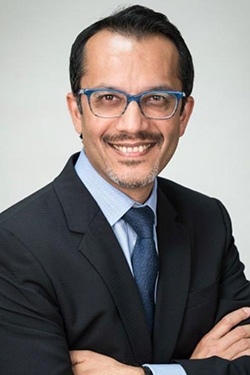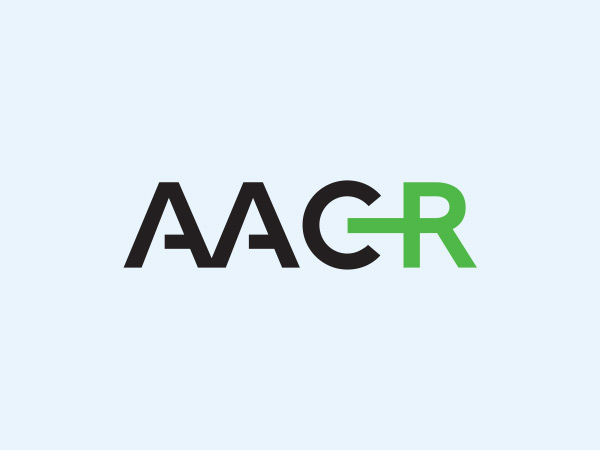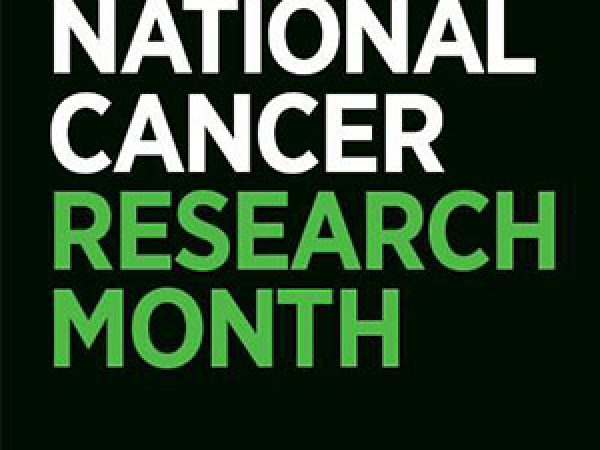Pancreatic Cancer: Research-driven Clinical Progress Examined at AACR Special Conference
With a five-year survival rate of only 12.5%, any progress toward new therapeutic approaches for pancreatic cancer is welcomed by patients and their families.
At present, increasingly complex chemotherapy regimens offer only marginal improvements over their predecessors. Immunotherapies, which have revolutionized treatment in other cancer types, have been thwarted by the dense microenvironment characteristic of pancreatic tumors. Even novel inhibitors targeting KRAS, among the most mutated genes in pancreatic cancer, failed to produce the blockbuster benefits researchers hoped for.
But researchers at the 2023 AACR Special Conference on Pancreatic Cancer, held September 27-30 in Boston, demonstrated ways that they are turning the tide on these challenges. Some are creating vaccines to train patients’ immune systems into assassins capable of infiltrating the stubborn tumors. Others are joining together chemotherapies and immune-modulating agents to create potent combination therapies capable of significantly improving outcomes.
Here, we recap some of the promising clinical trials presented at this year’s meeting.
PDAC Vaccines: Turning Cold Tumors Hot
Immune cells must navigate a dense tumor microenvironment to reach pancreatic tumors, and even if they do, they often have little to attack. The immune system identifies cancer via neoantigens—peptides encoded by mutated genes. Most pancreatic tumors have a relatively low mutation frequency, limiting the immune system’s potential targets.
Cancer vaccines present one way to help teach the immune system which neoantigens to target and prime immune cells for a larger response against the tumor. The idea behind such therapeutic vaccines is similar to that of preventive vaccines developed for infectious diseases: The vaccine delivers tumor-specific peptides or mRNA molecules that stimulate expansion of certain immune cell populations.
“Our greatest chance of success is in deploying these modalities in patients who have undergone surgery and have very low-volume disease,” said conference cochair Anirban Maitra, MBBS, a professor of pathology and translational molecular pathology and Scientific Director of the Sheikh Ahmed Pancreatic Cancer Research Center at the University of Texas MD Anderson Cancer Center. “This is where we can have the greatest impact on improving survival, and potentially a cure.”

In some cases, neoantigens represent the mutations driving the tumor to proliferate. Eileen M. O’Reilly, MD, a gastrointestinal oncologist at Memorial Sloan Kettering Cancer Center, and colleagues have designed a peptide-based vaccine targeting two common pancreatic cancer driver mutations, KRASG12D and KRASG12R.
The vaccine, called ELI-002 2P, was administered to patients with pancreatic or colorectal cancer in the phase I AMPLIFY-201 clinical trial. Patients were recruited to the trial if evidence of residual disease, including circulating tumor DNA or the biomarker CA19-9, existed in their blood after surgery. Twenty patients with pancreatic cancer and five patients with colorectal cancer received up to six priming doses and four booster doses of ELI-002 2P. Various doses of a vaccine adjuvant designed to boost T-cell expansion were included and tested.
T cells targeting the mutant KRAS neoantigens were detected in 20 of 23 evaluable patients, including all nine patients treated with the two highest doses of the vaccine adjuvant. After 25 weeks of follow-up, the median relapse-free survival was not reached among patients with above-median T-cell responses, compared to 17.1 weeks among patients with below-median T-cell responses, suggesting that response to the vaccine may improve patient outcomes.
“These are early signals, but they’re very supportive of this immunotherapy approach to undergo further development,” O’Reilly said. Based on these results, she and her colleagues are currently launching the AMPLIFY-7P trial to test an updated version of the vaccine, ELI-002 7P, which targets seven mutant KRAS alleles instead of two.
For patients with less common driver mutations, the solution may be more complicated, explained Vinod P. Balachandran, MD, a hepatopancreatobiliary surgeon and member of the David M. Rubenstein Center for Pancreatic Cancer Research at Memorial Sloan Kettering Cancer Center. Only 10% to 30% of neoantigens are capable of binding to the MHC-I complex that presents the neoantigens to immune cells, and only about 10% of those are predicted to mount an immune response.

Nevertheless, in a study of tumor samples acquired over time from nine long-term and six short-term survivors of pancreatic cancer, researchers found that long-term survivors paradoxically had fewer neoantigens than short-term survivors.
“Tumors enriched in high-quality but not [high]-quantity neoantigens identified patients with longer survival, introducing neoantigen quality potentially as a metric of tumor neoantigenicity,” Balachandran said. “Lowly mutated cancers like PDAC may, in fact, harbor neoantigens that are clinically relevant and potentially therapeutically targetable.”
Balachandran and colleagues began investigating the quality of pancreatic cancer neoantigens using computer modeling. In a phase I clinical trial, patients with pancreatic cancer had their tumors resected and comprehensively profiled to identify high-quality neoantigens that could be made into a personalized vaccine. mRNA vaccines were successfully created for 16 of 17 patients and administered after they received an immune checkpoint inhibitor but before the start of adjuvant chemotherapy, with a vaccine booster given after the chemotherapy regimen.
Half of patients experienced expansion of neoantigen-targeted T cells, with selected clones reaching up to 10% of all circulating T cells in some patients. Balachandran noted that this expansion persisted for at least two years, with neoantigen-directed clones comprising up to 2.5% of all circulating T cells even after chemotherapy.
The median relapse-free survival was 13.4 months among patients who did not mount a T-cell response but was not reached among patients who did mount a response, demonstrating that such an approach could potentially improve patient outcomes.
Optimizing Chemotherapy: Expanding the Arsenal
Chemotherapy is a mainstay of pancreatic cancer treatment, often given to patients before and/or after surgery if the tumor is resectable or given as part of a comprehensive treatment regimen if the tumor has spread too much to remove.
Two examples of common chemotherapy regimens include gemcitabine (Gemzar) plus paclitaxel (Taxol) or a combination consisting of leucovorin, 5-fluorouracil, irinotecan, and oxaliplatin (FOLFIRINOX); however, response rates to these chemotherapy regimens are only 23% and 32%, respectively, said Gulam A. Manji, MD, an assistant professor of medicine at Columbia University Irving Medical Center. Compared to gemcitabine alone, FOLFIRINOX increased survival by 4.3%, and the gemcitabine/paclitaxel combination increased survival by only 2.1%.

“When you’re sitting on the other side of the table, as a patient, these numbers don’t really have a lot of meaning,” Manji said, stressing the need for new approaches to boost chemotherapy efficacy.
The addition of immunotherapy to chemotherapy regimens is being tested in clinical trials, but Manji and colleagues sought to take things a step further by concurrently amplifying the immune response during chemoimmunotherapy. The chemokine receptor CXCR4, often expressed on pancreatic cancer cells, helps dampen antitumor immune responses. In preclinical models, blockade of CXCR4 has been shown to synergize with inhibition of the PD-1/PD-L1 immune checkpoint.
Manji and colleagues launched the Chemo4METPANC phase II clinical trial to test the combination of gemcitabine, paclitaxel, the PD-1 inhibitor cemiplimab (Libtayo), and the CXCR4 inhibitor motixafortide (Aphexda) in patients with advanced pancreatic cancer. Out of 11 patients treated with this regimen, seven experienced a partial response, three experienced stable disease, and one experienced disease progression. After a median follow-up of 13.4 months, three patients remained on treatment, and the median progression-free survival was 9.6 months.
Another way to boost the efficacy of chemotherapy is to increase the amount of drug that reaches the tumor. Activating the receptor CD40 can stimulate macrophages to degrade the dense tumor microenvironment, allowing greater access to drugs and cancer-killing immune cells, explained Teresa Macarulla, MD, PhD, group leader of the Gastrointestinal and Endocrine Tumors Group and the Noncolorectal GI Cancer Translational Research group at Vall d’Hebron Institute of Oncology in Spain.

Macarulla and colleagues conducted the phase I/II OPTIMIZE-1 clinical trial testing the CD40 agonist antibody mitazalimab in combination with mFOLFIRINOX, a FOLFIRINOX regimen with modified dosing. As of the data cutoff, 57 patients in the expansion cohort were evaluable for response, with 28 still undergoing treatment. The overall response rate was 43.9% (all responses were partial responses), and the disease control rate was 77.2%. The median duration of response was 8.7 months, but Macarulla noted that, with so many patients remaining on treatment, that data is immature; she stated that the typical duration of response for mFOLFIRINOX alone is around 5.9 months.
“Based on these results, I strongly encourage us to continue with the development of this strategy of mitazalimab in combination with modified FOLFIRINOX in patients with advanced pancreatic cancer, in a confirmatory setting,” Macarulla said.



